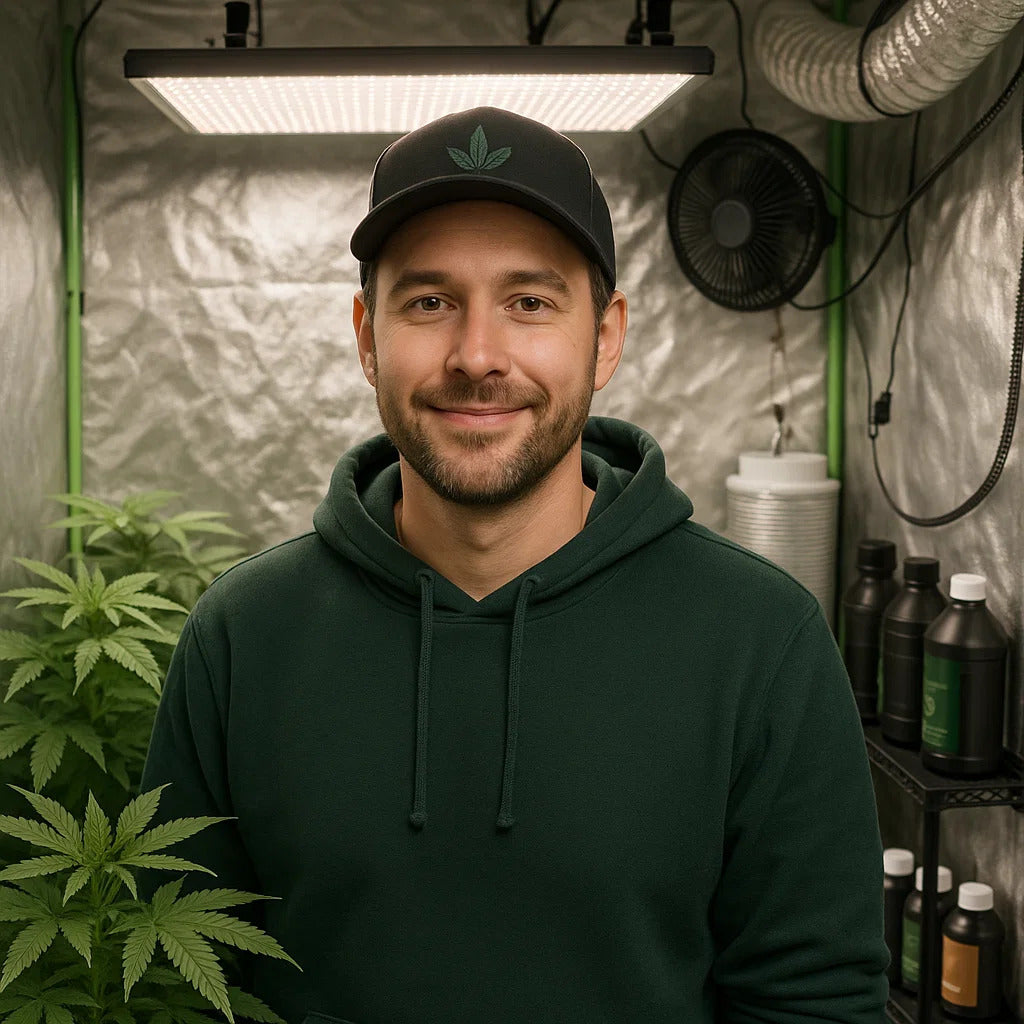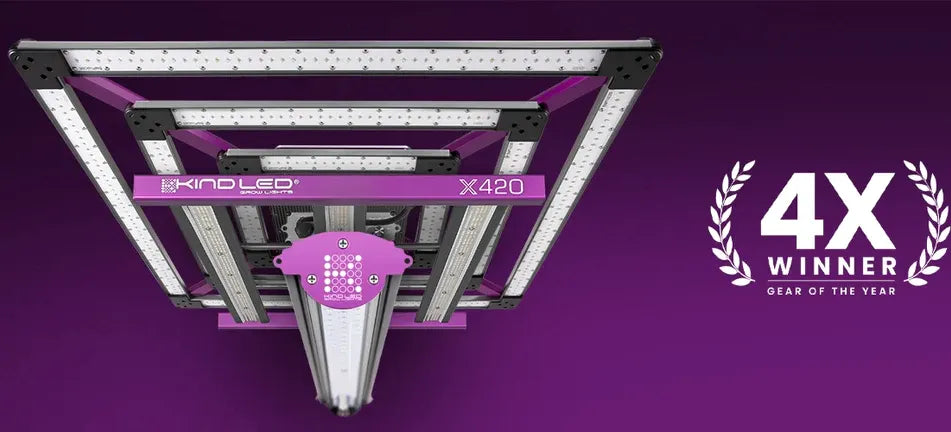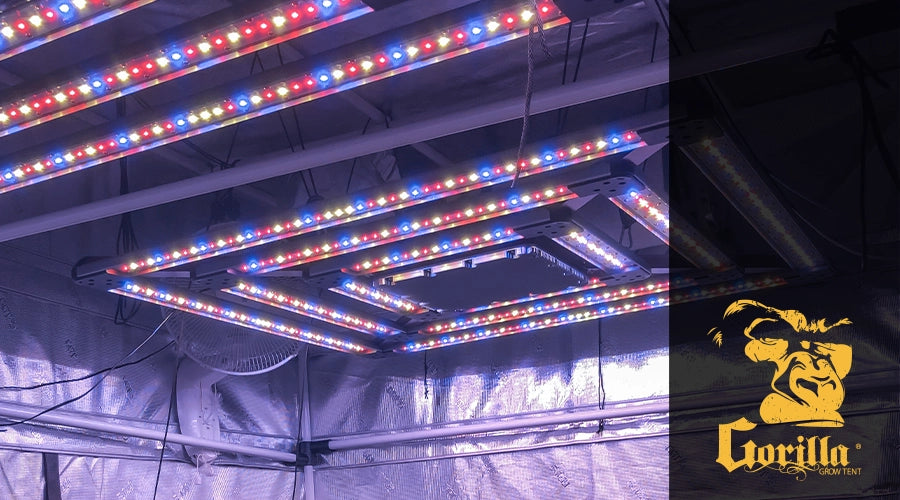
PPFD for Seedlings: Essential Light Requirements for Thriving Indoor Plants
Starting seedlings indoors requires precise lighting conditions to ensure healthy development and robust growth. Understanding Photosynthetic Photon Flux Density (PPFD) for seedlings is crucial for any indoor gardener looking to maximize germination rates and establish strong, healthy plants from the very beginning.
What is PPFD and Why It Matters for Seedlings
PPFD measures the amount of photosynthetically active radiation (PAR) that reaches your plants per square meter per second. For seedlings, getting the PPFD levels right can mean the difference between weak, leggy plants and robust, compact growth that sets the foundation for exceptional harvests.
Young seedlings have delicate tissues and specific light requirements that differ significantly from mature plants. Too much light can cause stress, burning, and stunted development, while insufficient light leads to weak, stretched plants that struggle to survive transplanting.

Optimal PPFD Levels for Different Seedling Stages
Germination Stage (0-7 Days)
During the initial germination phase, most seeds don't require direct light exposure. However, once cotyledons emerge, seedlings need gentle light introduction:
- PPFD Range: 25-50 μmol/m²/s
- Duration: 12-14 hours daily
- Light Distance: 18-24 inches from light source
Early Seedling Stage (1-2 Weeks)
As true leaves begin to develop, seedlings require increased light intensity to support photosynthesis and prevent stretching:
- PPFD Range: 75-150 μmol/m²/s
- Duration: 14-16 hours daily
- Light Distance: 12-18 inches from light source
Established Seedling Stage (2-4 Weeks)
Once seedlings have developed 2-4 sets of true leaves, they can handle higher light intensities:
- PPFD Range: 150-300 μmol/m²/s
- Duration: 14-16 hours daily
- Light Distance: 8-12 inches from light source
Choosing the Right LED Grow Lights for Seedling PPFD
Selecting appropriate grow lights is essential for maintaining optimal PPFD levels. Gorilla Xi220 LED Grow Light provides exceptional control for small-scale seedling operations, offering precise spectrum control and adjustable intensity perfect for delicate young plants.
For larger seedling setups, the Gorilla Xi330 LED Grow Light delivers consistent PPFD across 2'x3' to 3'x3' footprints, ensuring uniform light distribution for multiple seedling trays.
Measuring and Monitoring PPFD for Seedlings
Essential Equipment for PPFD Measurement
Professional PAR meters provide accurate PPFD readings, but smartphone apps can offer basic measurements for home growers. Key measurement practices include:
- Take readings at canopy level where seedlings receive light
- Measure at multiple points across the growing area
- Check PPFD levels at different times throughout the photoperiod
- Monitor changes as you adjust light height and intensity
Signs of Incorrect PPFD Levels
Too High PPFD (Light Stress):
- Bleached or yellowing leaves
- Curled leaf edges
- Stunted growth
- Brown spots on foliage
Too Low PPFD (Insufficient Light):
- Elongated, weak stems (etiolation)
- Pale green coloration
- Large spaces between leaf nodes
- Leaning toward light source
Daily Light Integral (DLI) for Seedlings
While PPFD measures instantaneous light intensity, Daily Light Integral (DLI) represents the total amount of light seedlings receive over 24 hours. For healthy seedling development:
- Target DLI: 4-8 mol/m²/day
- Calculation: PPFD × photoperiod hours × 0.0036
- Example: 100 μmol/m²/s × 16 hours × 0.0036 = 5.76 mol/m²/day
Advanced PPFD Management Techniques
Progressive Light Acclimation
Gradually increasing PPFD levels helps seedlings adapt without stress:
- Week 1: Start at 50 μmol/m²/s
- Week 2: Increase to 100 μmol/m²/s
- Week 3: Raise to 150 μmol/m²/s
- Week 4: Reach 200-250 μmol/m²/s before transplanting
Spectrum Considerations for Seedling PPFD
The Gorilla Xi420 LED Grow Light features tri-channel spectrum control, allowing precise adjustment of blue, red, and far-red wavelengths. Blue light (400-500nm) is particularly important for seedlings as it:
- Promotes compact, sturdy growth
- Encourages strong root development
- Prevents excessive stem elongation
- Supports chlorophyll production
Common PPFD Mistakes with Seedlings
Mistake 1: Starting Too High
Many growers assume seedlings need the same light intensity as mature plants. Starting with excessive PPFD can shock delicate tissues and permanently damage growth potential.
Mistake 2: Inconsistent Photoperiods
Irregular lighting schedules disrupt seedling circadian rhythms and photosynthetic processes. Maintain consistent 14-16 hour photoperiods throughout the seedling stage.
Mistake 3: Ignoring Light Distribution
Uneven PPFD across seedling trays results in inconsistent growth. The Gorilla Xi750 LED Grow Light provides superior light distribution across 4'x4' to 5'x5' areas, ensuring uniform seedling development.
Environmental Factors Affecting PPFD Requirements
Temperature and PPFD Relationship
Higher PPFD levels require optimal temperature management:
- Ideal Temperature Range: 65-75°F (18-24°C)
- Higher PPFD: May require increased ventilation
- Lower Temperatures: Reduce PPFD absorption efficiency
Humidity Considerations
Seedlings thrive in higher humidity environments (60-70% RH), which affects their ability to process light energy efficiently. Proper humidity levels allow seedlings to utilize higher PPFD without stress.
CO2 and Light Interaction
While seedlings don't require CO2 supplementation, adequate air circulation ensures proper gas exchange, allowing efficient utilization of available PPFD.
Practical PPFD Setup for Seedling Success
Step-by-Step Setup Guide
- Position Lights: Start with lights 18-24 inches above seedling trays
- Set Initial Intensity: Begin with 25-50 μmol/m²/s for newly emerged seedlings
- Program Timer: Establish 14-16 hour photoperiods
- Monitor Daily: Check seedling response and adjust accordingly
- Measure PPFD: Use PAR meter to verify light levels at plant canopy
- Adjust Height: Lower lights gradually as seedlings develop
Creating Uniform Light Distribution
For consistent PPFD across multiple seedling trays:
- Use multiple smaller lights rather than one large fixture
- Overlap light coverage areas slightly
- Rotate seedling trays every 2-3 days
- Consider reflective materials to maximize light efficiency
Troubleshooting PPFD Issues
Seedlings Growing Too Tall
Problem: Insufficient PPFD causing etiolation Solution: Increase light intensity to 100-150 μmol/m²/s and reduce light distance
Leaf Burn or Bleaching
Problem: Excessive PPFD overwhelming seedling capacity Solution: Reduce intensity to 50-75 μmol/m²/s and increase light distance
Slow Growth Rate
Problem: Inadequate DLI or inconsistent photoperiods Solution: Extend photoperiod to 16 hours and ensure consistent daily schedule
Advanced Seedling PPFD Strategies
Species-Specific Requirements
Different plant species have varying PPFD tolerances:
- Tomatoes/Peppers: 100-200 μmol/m²/s at seedling stage
- Leafy Greens: 75-150 μmol/m²/s throughout development
- Herbs: 100-175 μmol/m²/s for optimal growth
- Cannabis: 150-250 μmol/m²/s for vigorous development
Transition to Vegetative Lighting
Preparing seedlings for higher light intensities:
- Week 3-4: Gradually increase to 250-300 μmol/m²/s
- Pre-transplant: Condition at 300-400 μmol/m²/s for 3-5 days
- Post-transplant: Begin vegetative PPFD levels (400-600 μmol/m²/s)
Maximizing Seedling Success with Proper PPFD Management
Understanding and implementing correct PPFD levels for seedlings creates the foundation for exceptional indoor growing success. By providing optimal light intensity during these critical early stages, growers can establish robust plants capable of thriving throughout their entire lifecycle.
The key to seedling PPFD success lies in gradual progression, consistent monitoring, and responsive adjustments based on plant behavior. Quality LED grow lights with precise control capabilities make maintaining optimal PPFD levels achievable for growers at any experience level.
Remember that PPFD is just one component of successful seedling cultivation. Combined with proper temperature, humidity, nutrition, and growing medium, optimal light intensity creates the perfect environment for seedling establishment and vigorous early growth that translates to exceptional mature plant performance.

Ready to optimize your seedling lighting setup? Explore our complete selection of precision LED grow lights designed for perfect PPFD control at every growth stage.

Lena Myles
I'm a mushroom enthusiast and home cook based in Oregon. I'm passionate about foraging and creating fungi-focused recipes, especially delicious, plant-based dishes using gourmet mushrooms like trumpet, shiitake, and oyster. When I’m not in the kitchen, you’ll usually find me wandering the woods in search of new wild flavors.



